Northern Renaissance in 10 Artworks
The Northern Renaissance took place in Europe north of the Alps, primarily in regions like the Netherlands, Germany, France, and England. Artists...
Anna Ingram 31 March 2025
Flemish painter Jan van Eyck (1390 – 1441) was one of the key artists of the Early Northern Renaissance. His technical brilliance and mastery of formal composition contributed to his reputation as one of the innovators of Early Netherlandish painting, while his art served as a model to generations of painters both North and South of the Alps. Ready to learn more about him?
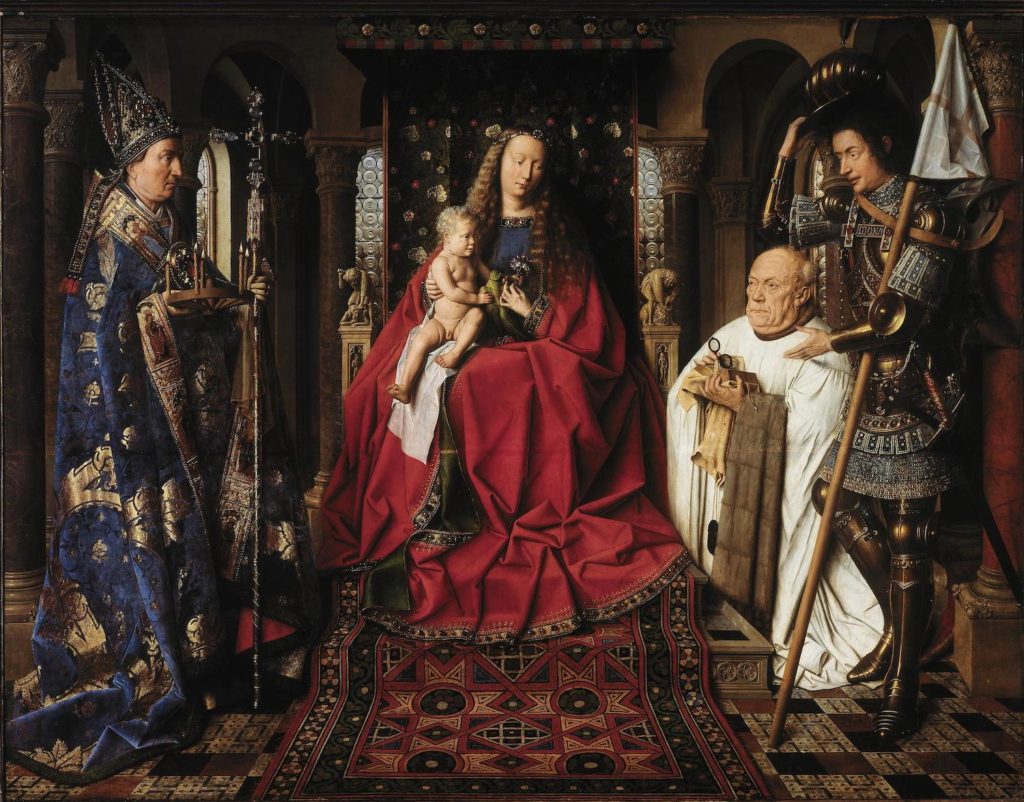
Giorgio Vasari, (the main source of art history gossip from the 16th century) in his famous Lives of the Most Excellent Painters, Sculptors, and Architects claimed that Van Eyck invented oil painting. Although nowadays it is proven to be a myth, Van Eyck definitely contributed to a revolution in art, switching from egg paint (tempera) to much richer and deeper colors available in oil paint. Moreover, he perfected the oil painting by applying several thin translucent layers of paint to the panels, which eventually created a unique illusion of depth.
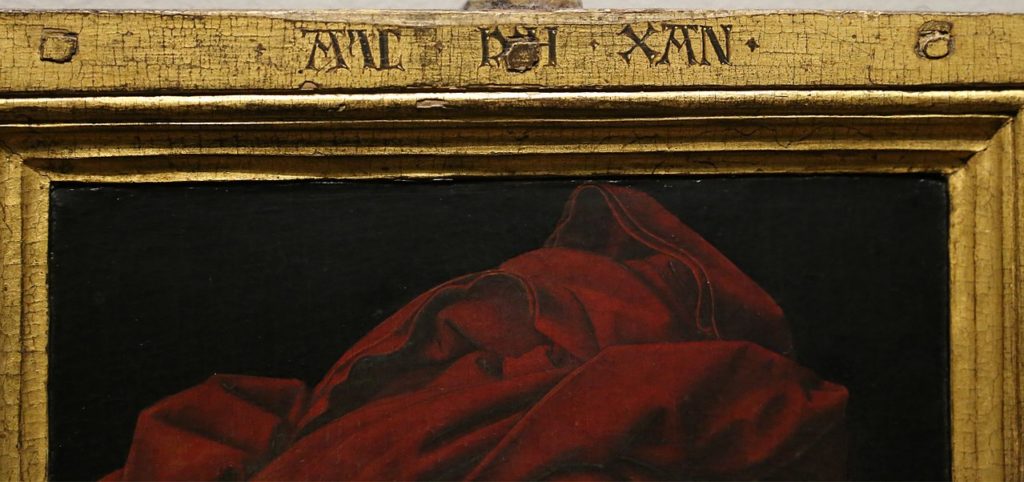
The later medieval artists remained anonymous, but in Northern Europe, this changed in the early 15th century – exactly when Van Eyck lived. He was one of the first artists to sign his paintings with his name, “JOHANNES DE EYCK”. On ten of these paintings, it’s followed by his personal motto, Als ich kan (As well as I can) which is usually written in Greek characters. It’s believed that by this he was challenging other artists to do better than him.
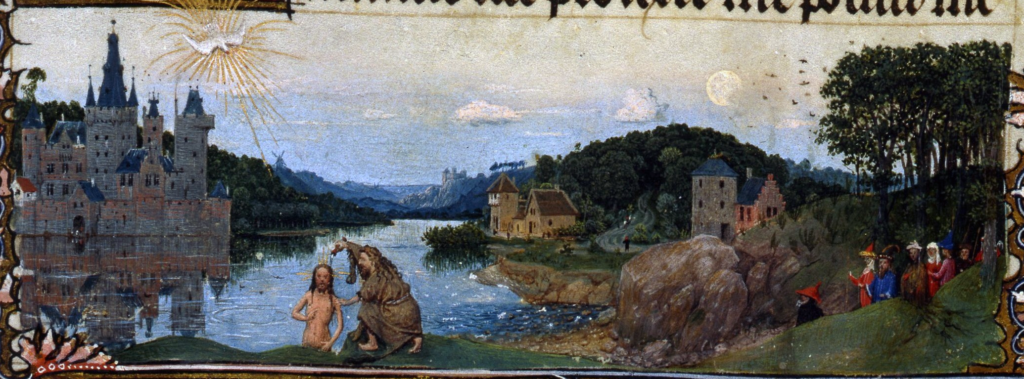
Today we know about 10 of Van Eyck’s works which are signed. Additionally, a little over 10 more are attributed to him. These include masterpieces created between 1432 and 1439, that vary in size and type, from the Ghent Altarpiece, through small-sized portraits to the illuminated miniatures of the Turin-Milan Hours.
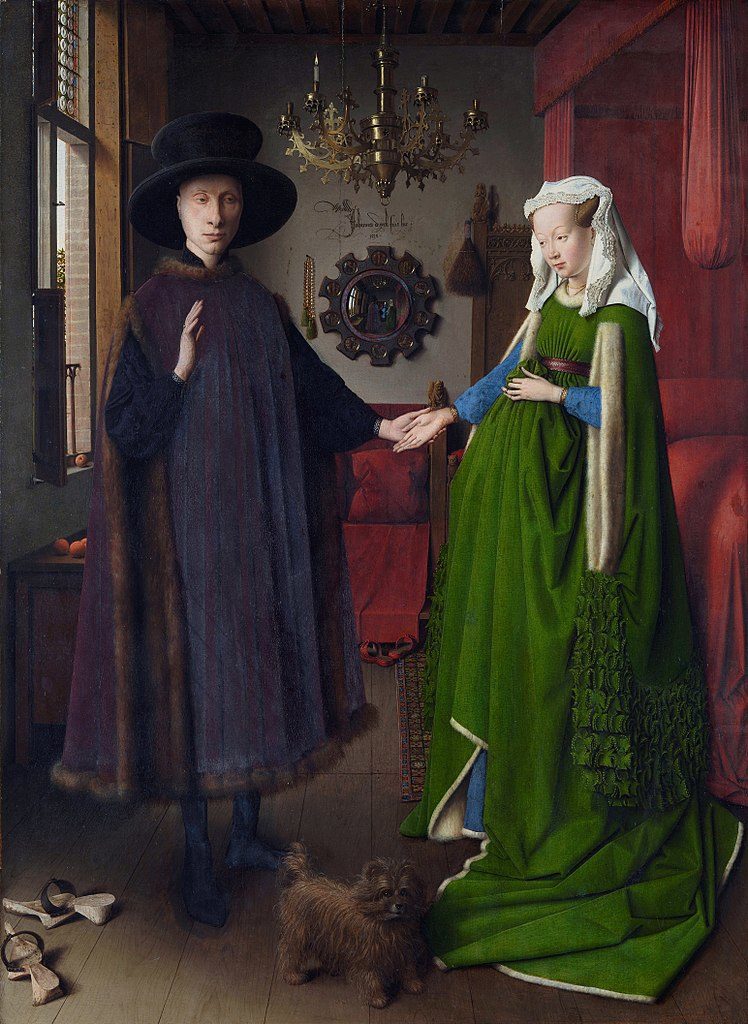
Jan van Eyck’s oeuvre covers various types of works and subjects. He painted secular portraits, religious altarpieces, and single-panel figures. His religious works are astonishing and his portraits are striking. The demand for portraits was high at the time because more and more people could afford such a whim, thanks to the emergence of the merchant middle class. On top of that, the popularity of humanist ideas brought bigger attention to people’s individuality. Van Eyck’s portraits stood out not only because of the previously mentioned depth and intensity of color and tone, achieved through oil paint experiments, but also meticulous attention to detail. He was a great observer and it shows in his amazing paintings. The naturalness of his depictions was admired as far away as Italy. Just look at his famous Arnolfini portrait!
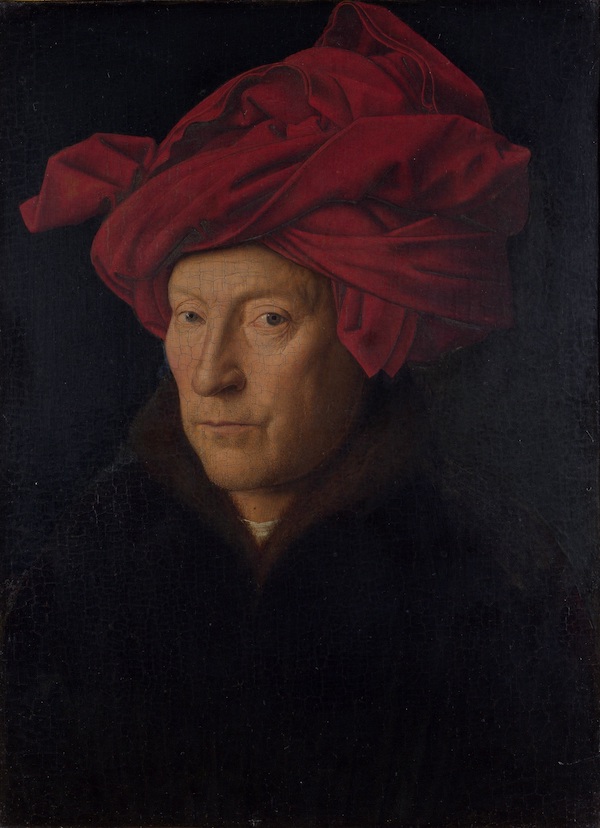
Portrait of a Man (Self Portrait?), also known as a Portrait of a Man in a Turban or Portrait of a Man in a Red Turban, was painted in oil in 1433. It has the Als Ich Kan autograph, but here it is unusually large and prominent, written on the frame. Consequently, this fact, along with the man’s unusually direct and confrontational gaze, has been taken as an indication that the work is a self-portrait. But, as often in art history, we are not completely sure about this.
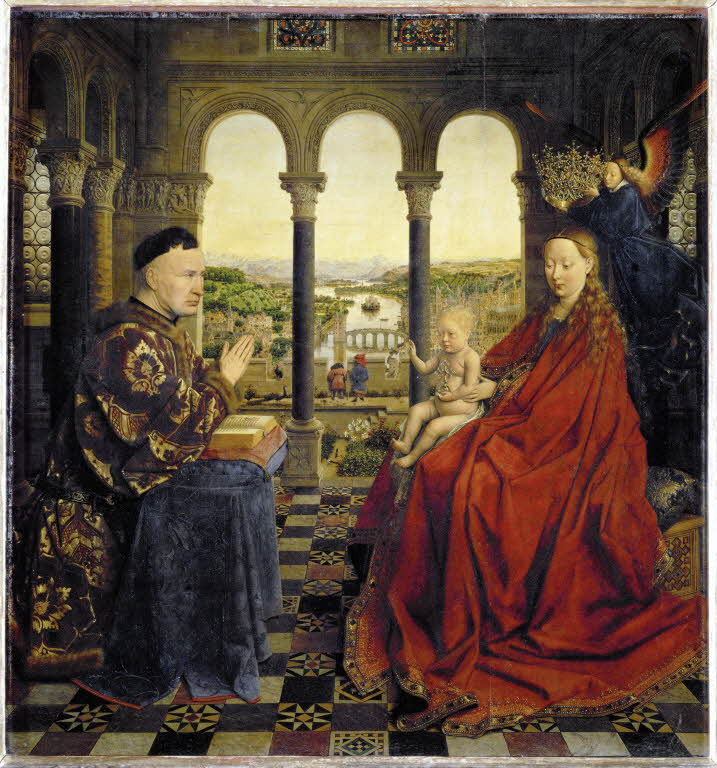
During the reign of Philip the Good, the small Duchy of Burgundy reached the apex of its prosperity and prestige and became a leading center of the arts. Thanks to his patron, Jan van Eyck had financial security and was able to paint whenever he wanted. The artist worked for the Duke as a court painter and also as a diplomat. He was respected and cherished in this role and it allowed him to make valuable connections. For example, we know that on 18 October 1427, during the Feast of St. Luke, Van Eyck traveled to Tournai to attend a banquet in his honor, also attended by Robert Campin and Rogier van der Weyden, two other stars of Early Northern Renaissance art.
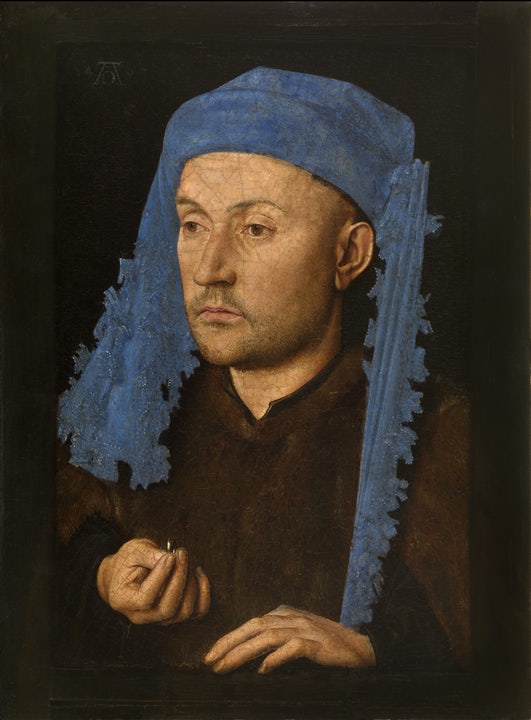
Jan van Eyck’s art was not slow to arouse the admiration of the Italians, however. During his lifetime he even had some Italians among his patrons. Shortly after his death, his paintings found an appreciative public in Italy. Two Genoese merchants trading in Bruges, as well as one Lucchese, are known to have commissioned pictures from him. It was very likely through them that some other paintings by the great Flemish master reached Italy.
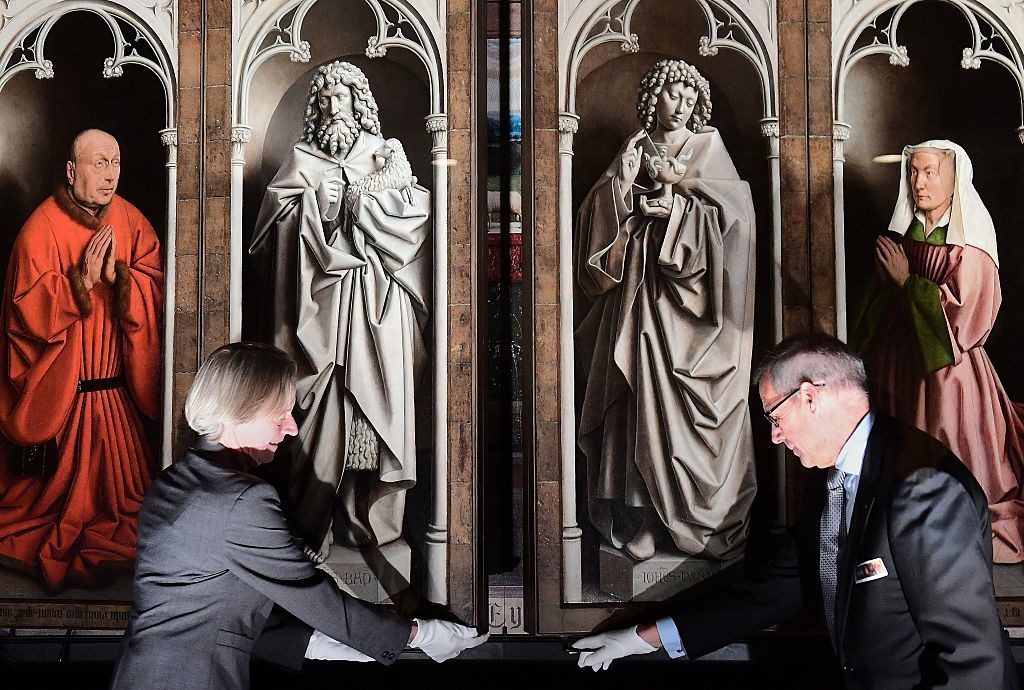
Jan van Eyck produced paintings for private clients in addition to his work at the court. Foremost among these is the Ghent Altarpiece. This masterpiece was commissioned by the merchant and mayor of Ghent Jodocus Vijdts and his wife Elisabeth Borluut. As the research shows the painting was started by the artist’s brother, Hubert van Eyck, and later finished by Jan. Perhaps their other brother, Lambert, was also involved in the creation process after Jan’s death. Each of the altarpiece’s 12 panels features intricately rendered biblical figures (some of the earliest subjects painted with oils) frozen in iconic scenes from Christianity.
In 2012 Belgium’s Royal Institute for Cultural Heritage invested $2.44 million into meticulously chipping away the artwork’s top layer of oils. The first stage of the restoration finished in October 2016. At the same time, the second phase of the restoration began, that of the 5 lower panels of the opened altarpiece, including the central panel featuring The Adoration of the Mystic Lamb. This part of the restoration finished in 2020 when the panels were returned to St Bavo’s Cathedral. The third and final phase is being conducted at the moment at the Museum of Fine Arts (MSK) in Ghent. What is even more interesting is that the visitors of the museum can actually witness the restoration works.
Here you can listen to a lecture by the head of the conservation of the altarpiece:
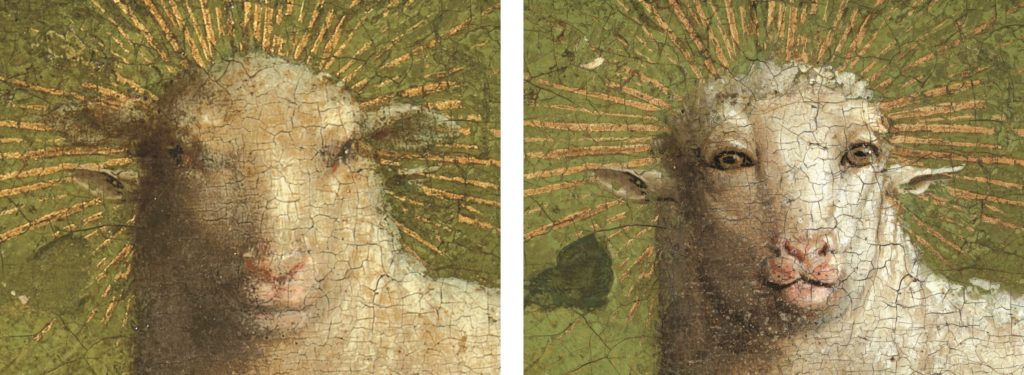
During the restoration of the Ghent Altarpiece, the restorers removed the over-paint on the part of the central panel that features the sacrificial lamb. The whole art history world gasped because the original Jan van Eyck’s lamb is… Ugly. Weird. Disturbing. You name it!
As you can see, the original lamb (the one on the right) has a much more human-like face. Art historians of the Royal Institute’s restoration project claim that it was over-painted in the 16th century to “neutralize” the expression. This was to make it less disturbing and to adapt it to the taste of the time of the over-painting.
I don’t know, but maybe even a master like Van Eyck didn’t have to be the best at everything.
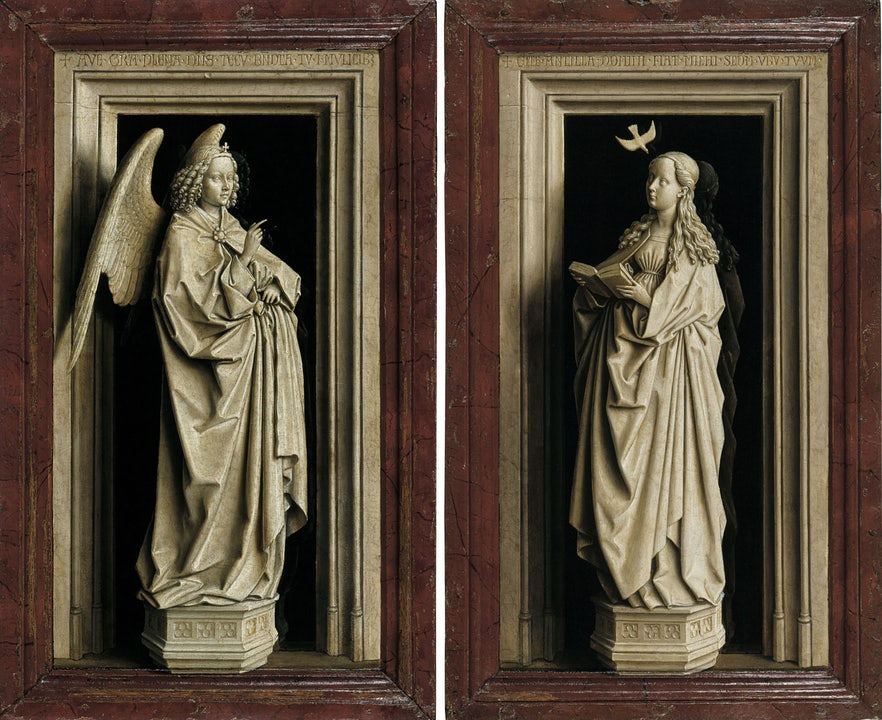
All of Van Eyck’s religious artworks predominantly highlight the Virgin Mary as the central figure, the only exception being the Ghent Altarpiece. Mary’s significance should be understood in the context of the prevailing cult and reverence surrounding her during the early 15th century. During this time, Mary gained prominence as an intercessor between the divine and Christians. In Van Eyck’s art, Mary typically embodies three roles: Mother of Christ, the personification of the “Ecclesia Triumphans,” or Queen of Heaven.
DailyArt Magazine needs your support. Every contribution, however big or small, is very valuable for our future. Thanks to it, we will be able to sustain and grow the Magazine. Thank you for your help!